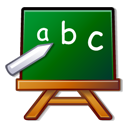ABE Math Tutorials/Whole numbers/Not enough info
Not enough information
| Whole numbers |
Introduction | Place value | Rounding | Long addition & subtraction | Long Multiplication | Long division | Expressing operations | Word problems | Order of operations | "Set-up" problems | Cost and distance problems | Introduction to algebra | Powers of 10 | Estimation | Not enough info | Homework
|
Intoduction
You might think that the GED Math test is there strictly to test your math skills. But this is not completely true. The math test -- like all the GED tests -- is also to test your reading skills, your understanding skills, and your common sense. There are some math test questions that do not require you to do any arithmetic at all -- you just have to be able to read the question and understand what it is asking. Take a look at the following example:
Lou's truck travels at a rate of 70 kilometers per hour. How far can he travel in an afternoon?
It's probably obvious to you right away that you can't figure this problem out the way it is given. How long is an afternoon? Three hours? Five hours? Thinking this out mathematically, you are asked to find the distance, and you know that the distance formula is:
distance = rate x time
but you don't know the time, so you can't calculate the distance! If you get a question like this on the GED, one of the answer choices will be:
Not enough information is given
The example above was an easy one -- only one of the necessary numbers was given (and you needed two). But sometimes you are given a problem with lots of numbers:
Sarah wants to buy a table and 4 chairs from a mail-order catalogue. The table costs $150, and the chairs cost $40 each. Tax on the table is $15, and tax on the chairs is $4 each. How much will her entire order cost, including shipping and handling?
Although you are given plenty of numbers to work with in this question, you are not given the cost for the shipping and handling. And yet you are asked to include this cost in your total. This is another example where you don't have enough information to answer this question.
Some of the GED math test questions will be two-step (or even three-step) word problems. When you first read over the problem, you might think that you don't have enough information to answer the question. However, if you look more carefully, you may realize that you are able to figure out the number that you need from the other numbers given. (This is a good reason to read all problems over at least twice!) Here is an example:
- Jan belongs to a union whose annual dues are $120. She also has to pay a monthly union insurance fee of $5, and another $3 to cover the cost of refreshments at the union meetings every month. What are her total monthly union costs?
- $128
- $112
- $18
- $8
- Not enough information is given.
At first, you might be tempted to choose (5)"Not enough information is given". You are asked to find her total monthly costs, and yet it doesn't seem like all of her monthly costs are given. However, you are given her annual union dues ($120), and for this question it's important that you understand that "annual" means "per year". You can then figure out how much this amount would be each month (120 ÷ 12), and from there you can calculate the total monthly costs. The correct choice is (3) $18.
If you're ready for the homework, click here.
